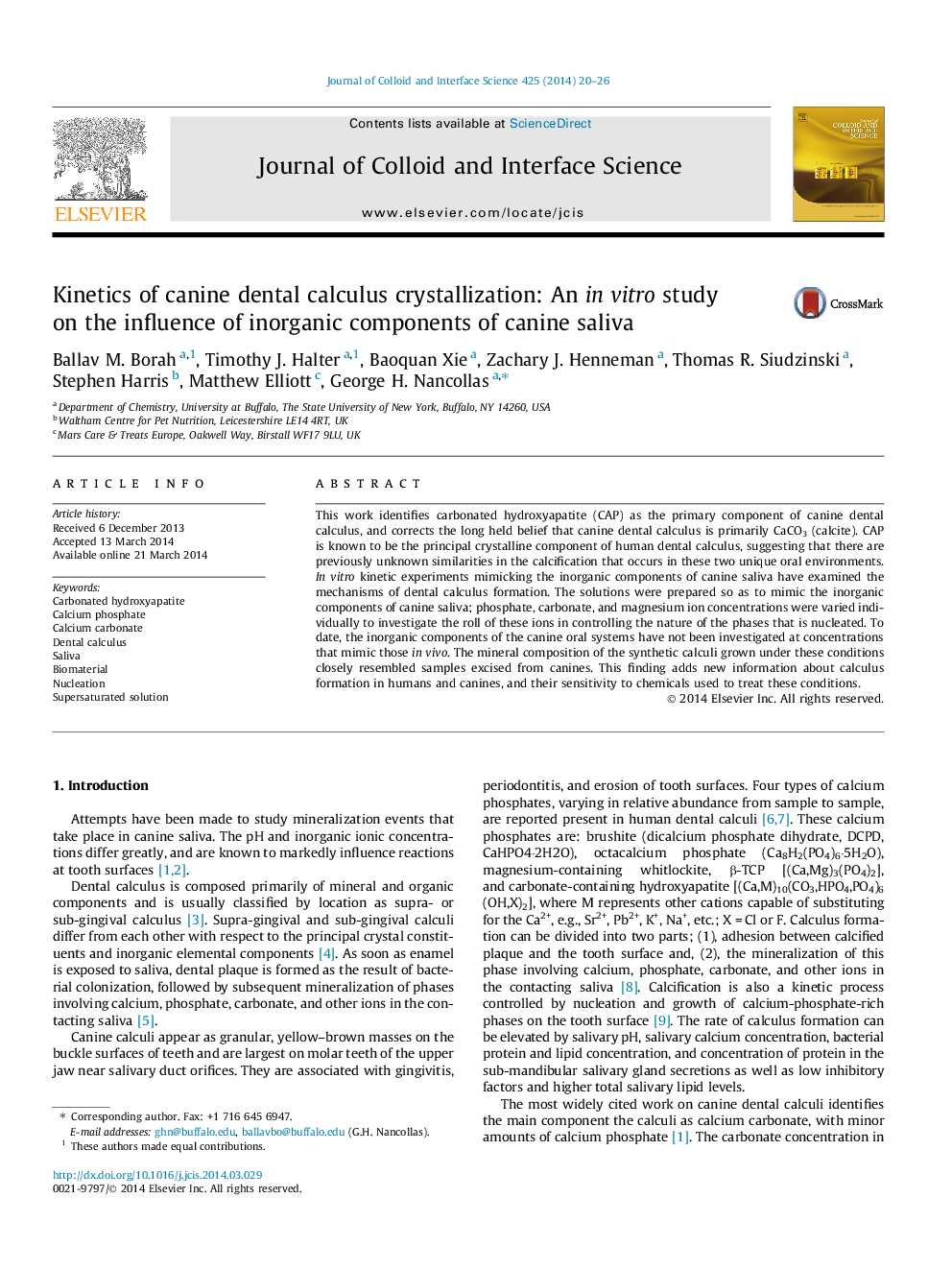| Article ID | Journal | Published Year | Pages | File Type |
|---|---|---|---|---|
| 607147 | Journal of Colloid and Interface Science | 2014 | 7 Pages |
•Calcite is not the primary component of canine dental calculus.•Carbonated hydroxyapatite (CAP) is the primary component of canine dental calculus.•Synthetic calculi was grown mimicking inorganic components of canine saliva.•Solutions with 10 mMol −HCO3 and 0.6 mMol −PO4 concentration 2.6 Ca2+ nucleate CAP.
This work identifies carbonated hydroxyapatite (CAP) as the primary component of canine dental calculus, and corrects the long held belief that canine dental calculus is primarily CaCO3 (calcite). CAP is known to be the principal crystalline component of human dental calculus, suggesting that there are previously unknown similarities in the calcification that occurs in these two unique oral environments. In vitro kinetic experiments mimicking the inorganic components of canine saliva have examined the mechanisms of dental calculus formation. The solutions were prepared so as to mimic the inorganic components of canine saliva; phosphate, carbonate, and magnesium ion concentrations were varied individually to investigate the roll of these ions in controlling the nature of the phases that is nucleated. To date, the inorganic components of the canine oral systems have not been investigated at concentrations that mimic those in vivo. The mineral composition of the synthetic calculi grown under these conditions closely resembled samples excised from canines. This finding adds new information about calculus formation in humans and canines, and their sensitivity to chemicals used to treat these conditions.
Graphical abstractFigure optionsDownload full-size imageDownload high-quality image (220 K)Download as PowerPoint slide
